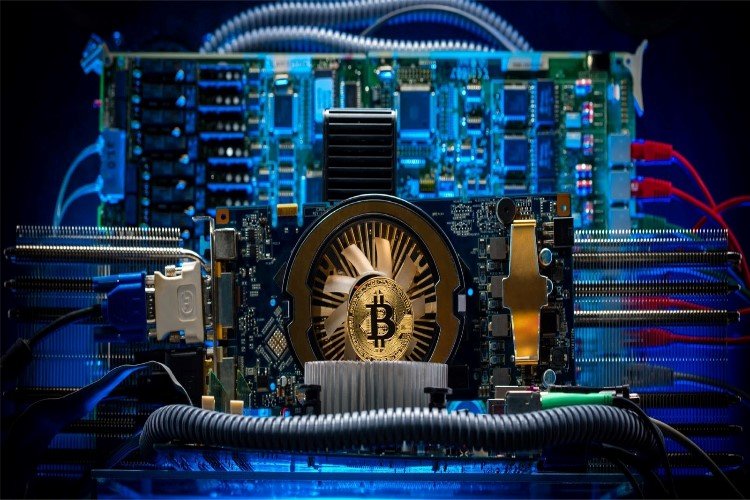How To Run and Operate Your Very Own Bitcoin Full Node

The Bitcoin (BTC) blockchain is a decentralized, peer-to-peer (P2P) network that is totally open source. That means that anyone who holds BTC can take part in the operations of the network. Running a Bitcoin full node is a pretty exciting way of getting involved in the Bitcoin blockchain, and it has a number of different benefits. So, want to know how to run and operate your very own Bitcoin full node? Keep reading.
Whenever buying or trading Bitcoin, make sure you’re using reliable platforms. Safety is key, stick to platforms like eToro, Bittrex and Coinbase.
What is a Bitcoin full node?
A Bitcoin full node is a program that validates transactions and blocks on the network. Full nodes can also help the blockchain by accepting Bitcoin transactions and blocks from other full nodes, validating them, and then relaying them on to other full nodes.
Many full nodes also serve lightweight clients. A lightweight client, or light node, is a piece of software that connects to a full node in order to interact with a blockchain. It does not download the full blockchain, instead it downloads the block headers only to validate the authenticity of transactions that pass through it. Lightweight nodes use the SPV method (Simplified Payment Verification) as a means to verify transactions. They can transmit their transactions to the network, and are then notified when a Bitcoin transaction hits their wallet. Enough nodes are needed for this function to be performed, otherwise clients won’t be able to connect through the P2P network - and they’ll have to switch to a centralized network instead.
There are already many, many individuals and organizations running full nodes using spare computing and bandwidth resources, but the network is growing every day, and more volunteers will be necessary for Bitcoin to continue to grow! That’s where you come in.
Benefits of running a Bitcoin full node
So, what are some of the benefits of running a Bitcoin full node?
- Helps the Network: Running a full node is the best way to ensure that all of the rules of the network are being adhered to. Nodes reject blocks and transactions if they don’t follow consensus rules.
- Safety: Running your own Bitcoin full node negates the need for third party wallets or lightweight clients. Using a Bitcoin wallet or client requires that you place your trust (and your coins) in the central node that your Bitcoin transactions are broadcasted through, and you won’t need to do that when you run your own full node.
- Freedom of choice: Should there be a hard fork where both blockchains remain economically active, the only way you can choose which rules to validate (new or old) will be by running a full node. If you don’t run a full node, your vote will not be considered and you’ll have to follow the rules of the blockchain that are given to you.
What you’ll need to run a Bitcoin full node
Want to know how to run and operate your very own Bitcoin full node?
Well, running a Bitcoin full node is relatively simple and low cost - however there are certain requirements that you’ll need to meet. This is what you’ll need to run and operate your very own Bitcoin full node:
- Desktop computer or laptop that runs a recent version of Windows, Linux, or Mac OS X operating systems.
- At least 200 gigabytes of free disk space, with a minimum read/write speed of 100 MB/s.
- 2 gigabytes of RAM.
- An internet connection with a minimum upload speed of 400 kilobits per second, an unmetered connection, and a connection with high upload limits.
- The full node must be able to run for at least 6 hours a day - although running it continuously would be best.
How to set up your Bitcoin full node
Since we’ve looked at the benefits of running a Bitcoin full node and what you’ll need, let’s take a look at how to set up your Bitcoin full node.
Step 1: Hardware
You can either choose to run your full node on your computer, or on an external device like a Raspberry Pi 3+.
Step 2: Choose your OS
Bitcoin full nodes can be run on a variety of operating systems including Windows, Mac OS X, and Linux. As long as it meets the full node minimum requirements, you’re good to go.
Step 3: Install Bitcoin Core
Installing Bitcoin Core is super simple but can take some time. You can follow the link here.
Step 4: Configure Your Router
You’ll need to configure your wireless router so that it accepts all incoming connections on port 8333.
Step 5: Verification
Finally, you’ll need to verify that your Bitcoin node can be reached. This tool from EARN.com can help you with the verification process. It can also check if your node is receiving connections from other nodes.
Should you run your own Bitcoin full node?
After looking at how to run and operate your very own Bitcoin full node, maybe the idea seems appealing to you. It’s much simpler than it appears at first glance, is relatively cheap and easy to set up, and gives you the satisfaction of knowing that you’re contributing to the blockchain. Also, your own coins will be much safer when they can transact through your own server rather than a third party! Running a full node doesn’t have to be super complicated, so feel free to refer back to this guide any time!